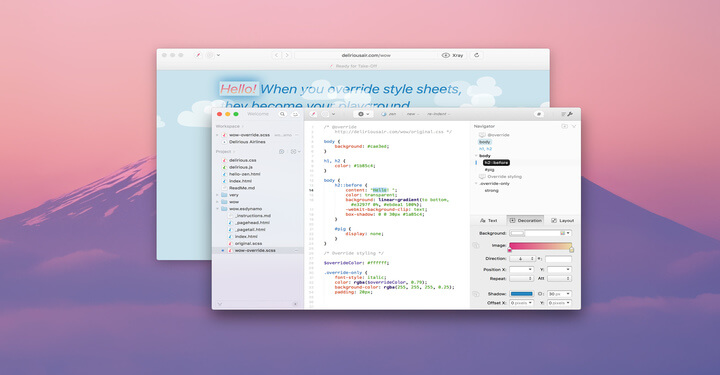

Edit to your heart’s content and save normally when you are done. Once you enter your password, a TextEdit window will open and the contents of the file you are editing will appear.
#What is default command line text editor mac password#
The correct password is your own (the password of the user logged into OS X, also the password you provide when doing system updates and so on), not the root user’s password (which doesn’t exist by default, anyway). When you run this command from a command line (in a Terminal window), you’ll be prompted for a password. In many systems this terminal command may work better: Sudo /Applications/TextEdit.app/Contents/MacOS/TextEdit /etc/hosts In the case of TextEdit, the path to this executable is /Applications/TextEdit.app/Contents/MacOS/TextEditīased on this information, running TextEdit with sudo to edit the /etc/hosts file becomes a simple task (if a rather long command line, sorry): Of interest to us is the location of the actual executable file inside the app directory. This directory structure allows the applications to have many supporting files and resources neatly contained within them. If you look in a few, you’ll see that there is some standard organization in them and that should make you feel a little warmer and possibly fuzzier about this whole situation. You can change directory into one of these directories and look around. If you list the files from the command line ( ls -l /Applications ) they are actually directories, not simply files, and have a. When you look at the /Applications folder in a finder window, you’ll see the applications listed by name such as TextEdit. If you’ve never poked around at an application in OS X, it’s interesting to take a peek. In this case we want to launch the TextEdit application. Most commonly (and by default) the other user is root, the superuser of the system who can do anything to any file on the box. The sudo command line application allows a user to run another application as though they are another user. Following the steps in this recipe, you can edit a system file using TextEdit and put off learning vi for another day. An alternative is the use of TextEdit, the graphical text editor application, but under normal circumstances, you can open a system file like hosts but cannot save it.

To the uninitiated, vi can cause intestinal distress and hair loss. Typically, this is accomplished using sudo (which lets authorized users assume superuser powers, cape and tights optional) and vi. Thus it is a mere perculiarity of Ubuntu that it has Debian's alternatives system.Editing some files on an OS X system requires superuser or root permissions. The order of preference is the $GIT_EDITOR environment variable, thenĬore.editor configuration, then $VISUAL, then $EDITOR, and then theĭefault chosen at compile time, which is usually vi. See also git-var(1) and the core.editor option in git-Īnd if we look through git-var it tells us It is usedīy several Git commands when, on interactive mode, an editor is toīe launched. This environment variable overrides $EDITOR and $VISUAL. In my case, that's nano (which I assume is default for Ubuntu, because I don't remember consciously making an effort to change my default editor).īut on other systems other than Ubuntu (or I should say which have no Debian's alternatives system), there is no editor. Here's mine (private info is unset of course): $ git var -lĪs heemayl already pointed out, editor command is the one set by /etc/alternatives/editor.
/windows-7-cmd-commands-5814df755f9b581c0baede29-94af281c8d1f455f9eee80d9e8d3fef8.jpg)
There is actually git var -l which allows you to list the variables, including GIT_EDITOR variable.


 0 kommentar(er)
0 kommentar(er)
